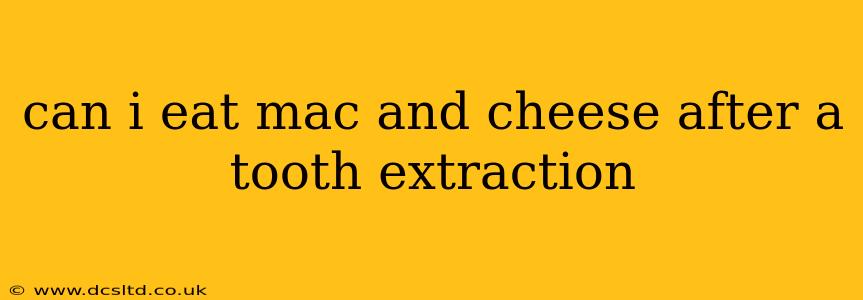Having a tooth extracted can be a bit of a rough patch, and one of the first things on your mind is likely what you can eat. Mac and cheese, with its creamy texture and comforting taste, often springs to mind. But is it a safe choice after a tooth extraction? The answer, unfortunately, isn't a simple yes or no. It depends on several factors, primarily the location of the extraction and the stage of your healing process.
Let's delve into the details to help you navigate this culinary conundrum.
What Can I Eat After a Tooth Extraction?
Immediately following a tooth extraction, your primary concern should be preventing irritation and promoting healing. This means avoiding anything that could dislodge the blood clot forming in the socket (known as a dry socket), get stuck in the wound, or require excessive chewing. Soft, bland foods are your best bet in the first few days. Think applesauce, yogurt, mashed potatoes, and well-cooked oatmeal.
Is Mac and Cheese Too Hard to Eat After a Tooth Extraction?
Mac and cheese presents a bit of a challenge. The texture can be a concern. While some versions are creamy and smooth, others contain harder pasta pieces or a slightly crumbly cheese sauce. These harder elements can potentially irritate the extraction site or get lodged in the wound.
What About the Temperature of Mac and Cheese?
Temperature is another important consideration. Very hot mac and cheese could increase pain and inflammation at the extraction site. It's best to wait until the mac and cheese is lukewarm or at room temperature before consuming it.
How Long Should I Wait Before Eating Mac and Cheese?
There's no hard and fast rule, as healing times vary. However, it's generally advisable to wait at least 24 hours after your extraction before considering anything other than the softest foods. After this initial period, you can gradually introduce slightly more textured foods, but always listen to your body. If the mac and cheese causes discomfort or pain, it's best to avoid it for a little longer.
Can I Eat Mac and Cheese if I Have a Dry Socket?
Absolutely not. If you develop a dry socket (alveolar osteitis), a painful condition where the blood clot is lost from the extraction site, you absolutely must avoid anything that could further irritate the area. This includes mac and cheese. You'll need to follow your dentist's instructions for managing a dry socket, which often involves special medicated dressings and pain relief.
What are some alternatives to mac and cheese?
Plenty of other comforting and easy-to-eat options are available. Consider:
- Smoothies: Packed with nutrients and easy on the extraction site.
- Soups: Opt for pureed or broth-based soups to avoid chunky ingredients.
- Scrambled eggs: Soft and easily mashed.
- Yogurt: Provides protein and is gentle on your gums.
- Mashed bananas: Sweet and nutritious.
When can I resume my normal diet?
The timeline for returning to your regular diet will depend on your individual healing process and the complexity of the extraction. Most people can gradually reintroduce more textured foods after a week or so, but always check with your dentist or oral surgeon for personalized advice.
Remember, always consult your dentist or oral surgeon for specific dietary recommendations following your tooth extraction. They can provide personalized guidance based on your individual circumstances and help ensure a smooth recovery. Your comfort and healing are their top priorities.
